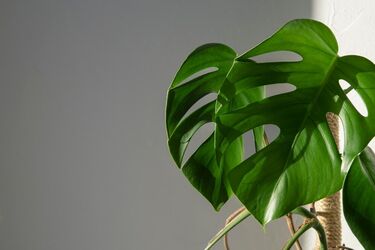Indoor killers: which plants should never be kept in the house

Has your passion for flowers turned your home into a real botanical garden? Did you know that some of these plants can pose a threat to health and sometimes life?
UAportal team together with Ukr.Media tell you which flowers can be dangerous in your home, especially if you have children or pets.
Tropical caladium
This plant delights with its beauty, but it hides a health hazard. It is also known as "Elephant's Ear" because of the characteristic shape of its leaves, which are green-pink in color. The plant contains calcium oxalate, a substance that can cause skin and mucous membrane irritation and digestive problems. This component is present in every part of the plant: from the leaves to the roots. Contact with it can cause pain, burns, swelling, and even vomiting. Therefore, it should be handled with protective gloves and is extremely toxic to pets.
Monstera
Another plant from the Aroid family is also not recommended for keeping in living quarters. Its leaves contain the same calcium oxalate, which, when in contact with mucous membranes, can provoke a serious toxic reaction. If swallowed, it can cause numbness, throat irritation, swelling, and loss of voice. This vine is dangerous for both humans and animals.
Adenium
Despite the attractive and original appearance of the trunk, it is better to avoid growing this plant at home. Its sap is highly toxic, as the poison contained in it can penetrate the body through the skin. Adenium juice is traditionally used as a poison among African tribes. Even a small wound that gets this poison can be fatal.
Jatropha
This plant stands out for its exotic appearance. It attracts the eye not only with its unusual tuberous root, but also with its brightly colored flowers. It is widely used as a natural barrier in Africa and Asia. Jatropha is known for its high toxicity due to the content of the phytotoxin curcine, which, if ingested, can cause serious dehydration, cardiovascular malfunctions, and sometimes death. Interestingly, the processed oil from the seeds of this plant can be used as an alternative fuel for diesel engines.
Large-leaved hydrangea
This beautiful flower is often found both in apartments and in summer cottages. However, despite its external attractiveness, it can be dangerous. The cyanogenic glycosides contained in the leaves and buds of the flowers can cause poisoning. Symptoms include dizziness, a drop in blood pressure, and heart palpitations, and in some cases, fainting and convulsions may occur.
If you want to get the latest news about the war and events in Ukraine, subscribe to our Telegram channel!
